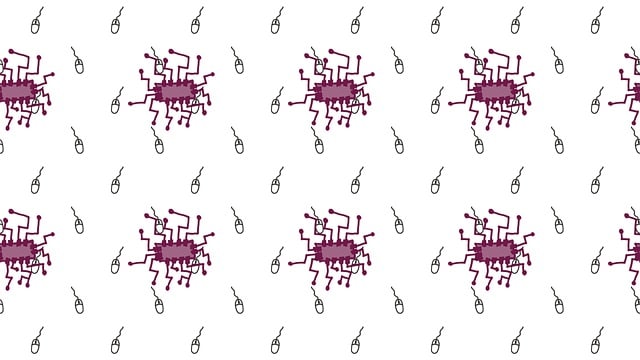Evaluating a chatbot AI's success involves monitoring KPIs like conversation completion rate, user engagement indicators, and customer satisfaction scores. ROI measurement uses machine learning to track key metrics over time, comparing chatbot performance to human interventions. A/B testing optimizes performance, while combining qualitative and quantitative evaluations provides a holistic view of value. Continuous optimization, driven by user interactions and machine learning, ensures the chatbot AI evolves with improved accuracy and relevance, maximizing ROI.
Calculating the return on investment (ROI) of an AI chatbot is crucial for businesses seeking to optimize their digital strategies. This article guides you through the process, focusing on key performance indicators (KPIs), data-driven measurement techniques, and the distinction between qualitative and quantitative assessments. Learn how to navigate the complexities of evaluating chatbot AI effectiveness, and discover strategies for continuous improvement and enhanced ROI through iterative optimization.
- Understanding Key Performance Indicators for Chatbots
- Data-Driven Methods to Measure ROI
- Qualitative vs Quantitative Assessment Techniques
- Optimizing and Iterating for Enhanced AI Chatbot Return on Investment
Understanding Key Performance Indicators for Chatbots

Evaluating the success of an AI chatbot involves understanding and tracking its Key Performance Indicators (KPIs). These metrics are vital for gauging the effectiveness, efficiency, and impact of a chatbot AI system. Some core KPIs include conversation completion rate, which measures the percentage of user interactions that are successfully concluded without requiring human intervention; average handle time, tracking how quickly a chatbot addresses user queries; and customer satisfaction scores, assessing user feedback on their interaction with the bot.
Moreover, tracking user engagement metrics is crucial. This includes session duration, indicating how long users interact with the chatbot, and message volume, which measures the total number of messages exchanged. By analyzing these KPIs, businesses can gain insights into user behavior, identify areas for improvement, and optimize the performance of their AI chatbots to enhance overall user experience.
Data-Driven Methods to Measure ROI

Measuring the return on investment (ROI) for a chatbot AI is a data-driven process that involves tracking key metrics and analyzing user interactions. By utilizing machine learning algorithms, chatbots can learn from user inputs, improving their performance over time. This continuous learning helps in enhancing response accuracy and personalization, which directly impacts user satisfaction and engagement.
Data collection plays a pivotal role here. Chatbot developers can gather valuable insights by monitoring user queries, response times, conversion rates, and customer support tickets. For instance, analyzing the number of successful resolutions through chatbot interactions versus human agent interventions can demonstrate its effectiveness. Additionally, A/B testing different chatbot strategies allows for fine-tuning and optimizing its performance, ultimately maximizing ROI.
Qualitative vs Quantitative Assessment Techniques

When evaluating the return on investment (ROI) of an AI Chatbot, one must consider both qualitative and quantitative assessment techniques. Quantitative methods involve measuring tangible outcomes like increased customer satisfaction scores, reduced response times, or improved sales conversions. These metrics provide clear, numerical evidence of the chatbot’s success, making it easier to track and attribute direct benefits to its implementation.
In contrast, qualitative assessments delve into user experiences, customer feedback, and the overall impact on business operations. This includes understanding how the chatbot enhances agent productivity by handling routine queries, allowing human agents to focus on more complex tasks. Qualitative insights offer deeper context, revealing areas for improvement or unexpected benefits that might not be evident through quantitative measures alone. Integrating both approaches ensures a comprehensive understanding of an AI Chatbot’s ROI, catering to both hard data enthusiasts and those valuing the nuanced intricacies of user interactions.
Optimizing and Iterating for Enhanced AI Chatbot Return on Investment

To maximize the return on investment (ROI) for a chatbot AI, continuous optimization and iteration are key. Regularly analyze user interactions to identify areas where the chatbot can better understand and respond to queries, enhancing user satisfaction. Incorporate machine learning algorithms that adapt based on user feedback, allowing the chatbot to evolve and provide more accurate, contextually relevant answers over time.
Additionally, monitor key performance indicators (KPIs) such as response accuracy, user engagement metrics, and resolution rates. Use these insights to refine conversation flows, expand knowledge bases, and tailor responses to different user segments. By iteratively refining the chatbot’s capabilities, businesses can ensure it remains effective in addressing customer needs, ultimately driving higher ROI and stronger business outcomes.
Calculating the return on investment (ROI) for an AI chatbot is a multifaceted process that involves understanding key performance indicators, employing data-driven methods, and balancing qualitative and quantitative assessments. By optimizing and iteratively refining your chatbot’s capabilities, you can significantly enhance its ROI, ensuring it becomes a valuable asset to your organization. Integrating these strategies allows businesses to make informed decisions, improve user experiences, and maximize the potential of their AI chatbot implementations.
